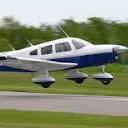kitplane01 wrote:Question: A Pheonix cannot fire based on a position from a E-2? In 1993??
No. The E-2C and Phoenix seeker would be blind due to Growlers.
kitplane01 wrote:Question: Can an F-14 target an incoming missile, in 1993?
No. The F-14 would be blind due to Growlers.
kitplane01 wrote:I don't think the 2020 air wing commander will load 10 AMRAMS per F-18. I bet he saves some space for close range missiles, and some space for fuel tanks.
Every Super Hornet would definitely be launching with 10 AMRAAMa, pair of sidewinders and centreline tank. Starting 700nm apart they would be meeting half way so there is no need for wing tanks. The Super Hornets would target multiple F-14, rapidly fire all 10 AMRAAM and then return straight back to the carrier.
A few carriers in 2020 also had a full squadron of 10 F-35C. This would probably increase the kill ratio far beyond 100:1. I would have a single F-35C 10-20nm in front of 4 Super Hornets and 1 Growler. The Growler then hides the Super Hornets and the F-35C in clear skies provides all the target information for the 40+ AMRAAM missiles. The F-35C stealth, LPI radar and Growler nearby would make them near invisible.
After the first wave of fighters take off the E-2 and anti-sub assets will then take off. The ships travel at 30 knots so there is plenty of time for all the Super Hornets to land and then re-arm again.
kitplane01 wrote:Still, if each 2020 F-18 downs four 1993 aircraft, that's a win. And four seems to be about a maximum effort, everything goes right, sort of score.
Laughable. There would be 400 missiles in the first wave from the 2020 air wing. That is 2 missiles for every 1993 jet.
bobinthecar wrote:I hope you are joking. While I do think the modern air wing taken as a whole is superior to the 1993 air wing it's not that superior.
No joke. 27 years of improvements. You can ask any military pilot when their aircraft got an avionics and radar upgrade what would the kill ratio be against the original jet. They would all say greater than 10:1.
27 years is more than two of these steps. 10x10 is 100:1.
bobinthecar wrote:Further the ASW component of the 93 air wing is much more superior so your single carrier may well get sunk by an LA class sub.
The modern carrier has MH-60R and active sonar. But I think the comparison was meant to be aircraft only.
bobinthecar wrote:Further what happens when you have three carriers attacking from three different directions.
If the starting positions are known then it makes sense for the 2020 carrier group to sail towards the biggest gap at full speed. This could give an extra 24 hours until the LA subs could target the 2020 carrier. All of the 1993 surface ships would be at the bottom of the ocean by that point.
But you could indeed cherry pick the scenario where the 1993 side wins. Say the 1993 carriers and surface ships are at 12 o'clock, 3 o'clock and 6 o'clock. Then all of the 1993 subs are invisible at 9 o'clock. The 2020 carrier would probably sail right into the 1993 subs.







